14 Japandi Living Room Designs for a Minimalist Zen Retreat
If you crave a home that feels calm, warm, and beautifully intentional, Japandi living room design is exactly what you need. It blends the Japanese love for simplicity and balance with the Scandinavian passion for coziness and natural beauty. The result? A space that feels like a quiet retreat — peaceful yet inviting.
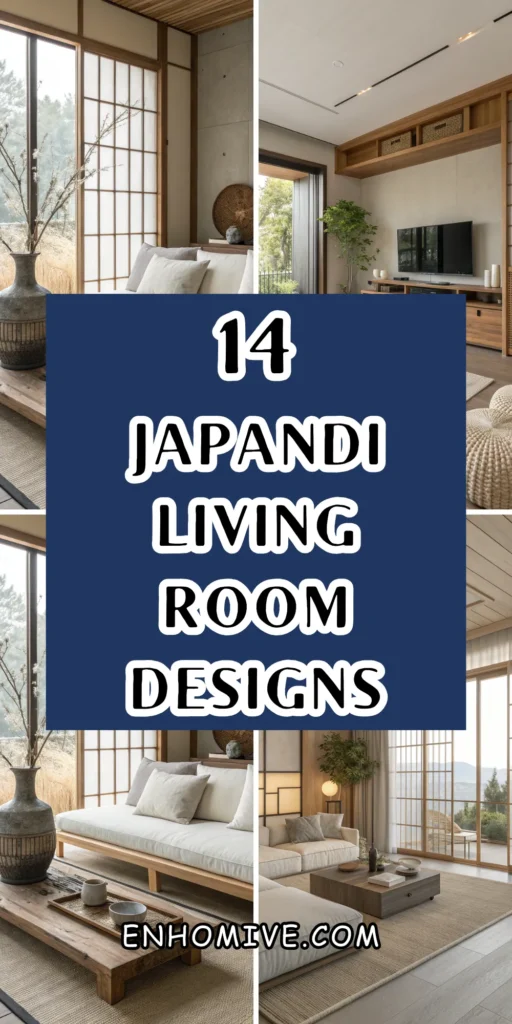
Here are 14 Japandi living room ideas to help you bring that serene energy into your home.
Soft Neutrals and Natural Light
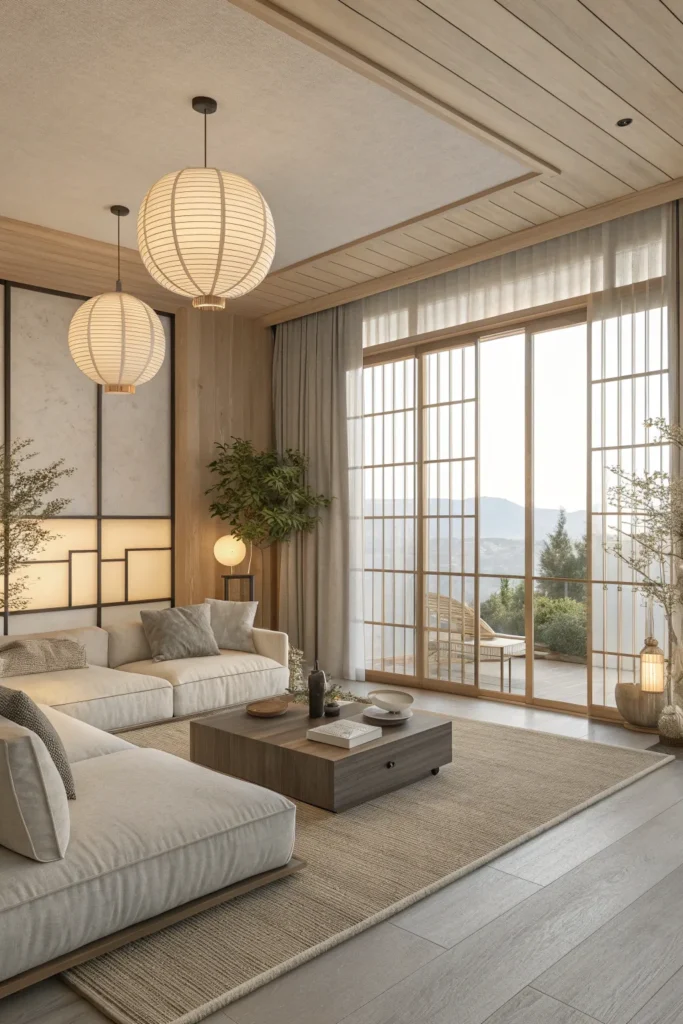
The Japandi palette is built on soft, neutral shades that calm the senses. Think warm whites, beiges, taupes, and gentle gray tones. These hues form a soothing backdrop that helps every natural element stand out. Avoid harsh contrasts and aim for gentle transitions between colors.
Natural light plays a key role too. Large windows, open curtains, and reflective surfaces allow sunlight to flood in, enhancing the sense of openness. If you don’t have big windows, use light mirrors strategically to bounce brightness around the room.
Pro Tip: For evening ambiance, add dimmable lamps or rice-paper lanterns that mimic daylight’s softness.
Low, Streamlined Furniture
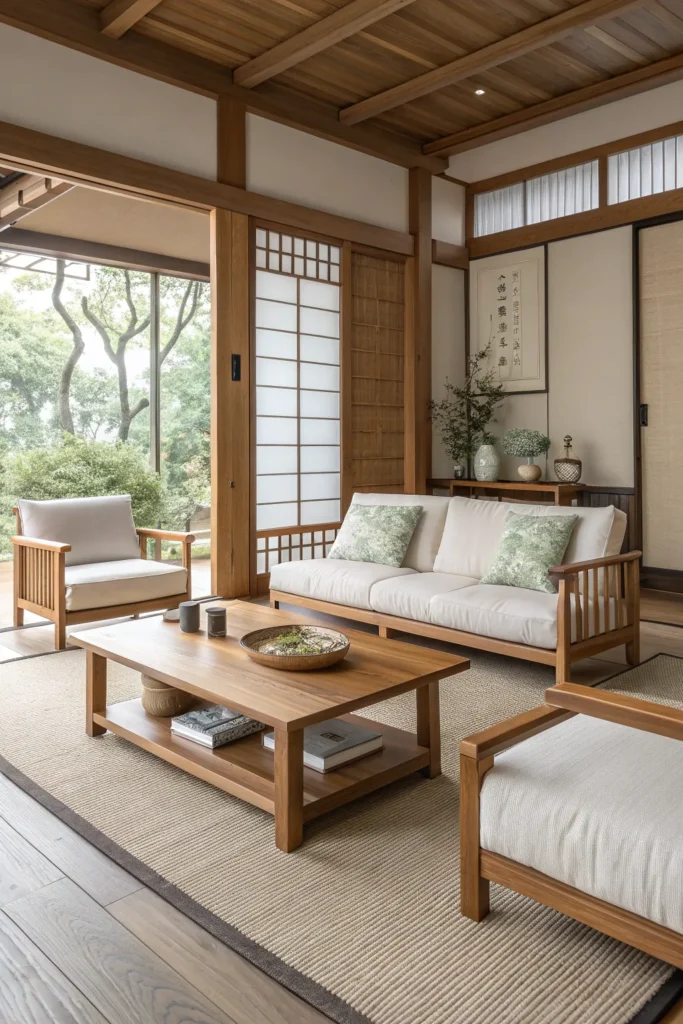
Japandi interiors are rooted in simplicity — and that starts with low, clean-lined furniture. Choose sofas and coffee tables that sit close to the ground, encouraging a relaxed, grounded energy. Avoid overstuffed pieces; instead, pick designs that are functional yet comfortable.
Opt for natural materials like solid wood, linen, or cotton upholstery. Minimalism doesn’t mean discomfort — it means everything has purpose and balance.
Pro Tip: Mix textures like a linen sofa paired with a smooth oak table for contrast that feels natural, not busy.
A Touch of Wabi-Sabi Imperfection
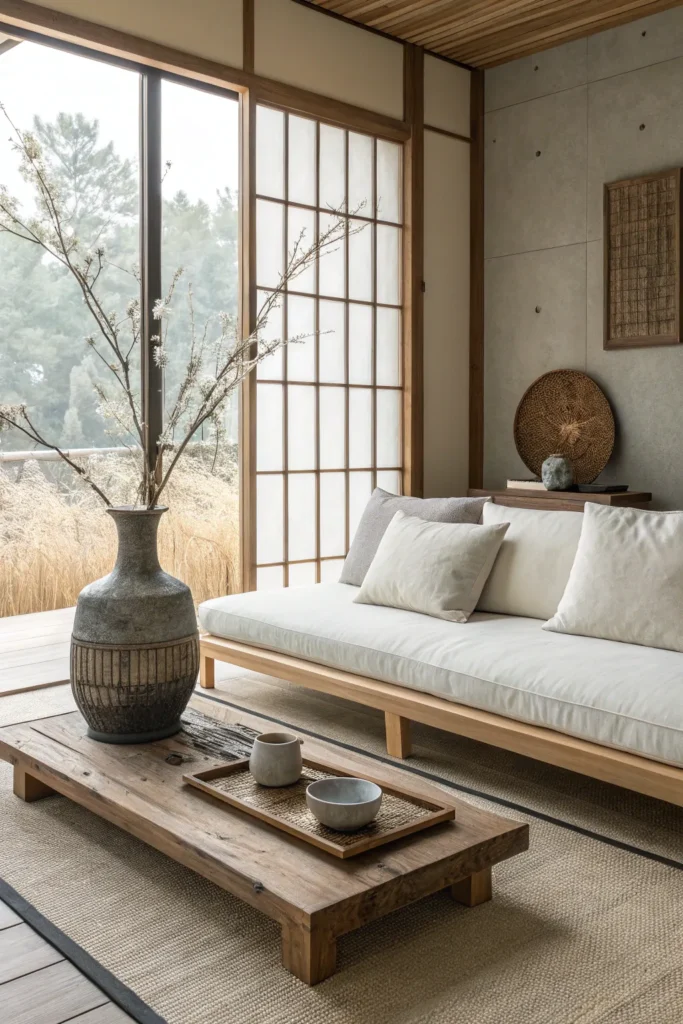
Wabi-sabi, the Japanese philosophy of finding beauty in imperfection, gives Japandi design its soul. This could be a slightly uneven handmade vase, a cracked ceramic cup you love, or an aged wooden tray that tells a story.
These imperfect details add warmth and authenticity to a minimalist setting. They remind us that beauty doesn’t have to be flawless — it’s often found in the small signs of life and time.
Pro Tip: Shop from local artisans or handmade decor shops for unique pieces that embody wabi-sabi charm.
Add Warmth with Wood Tones
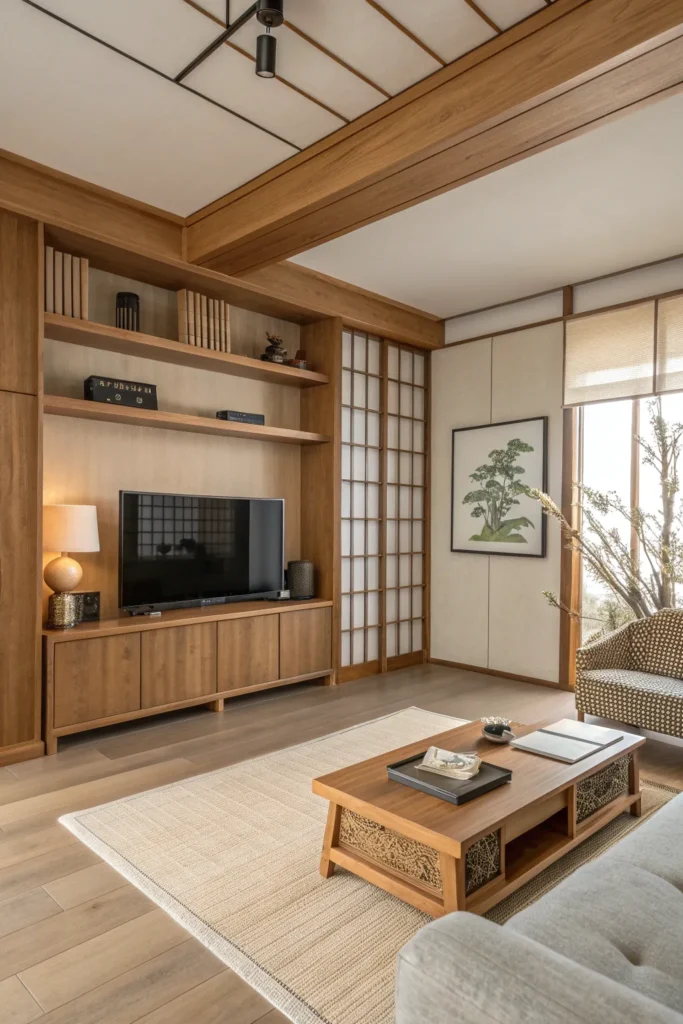
Wood is the heart of Japandi interiors. The Scandinavian side favors light woods like birch, ash, and pine, while Japanese style often uses richer tones like walnut or cedar. Combine both for visual depth — light wood floors with darker shelves or frames can make the space feel layered yet cohesive.
You don’t need to overhaul your furniture to add warmth. Even small touches like a wooden tray, wall art frame, or a bamboo lamp base can make a big difference.
Pro Tip: Stick to matte finishes — high gloss can take away from the natural, grounded feeling Japandi spaces are known for.
Layer Natural Textures
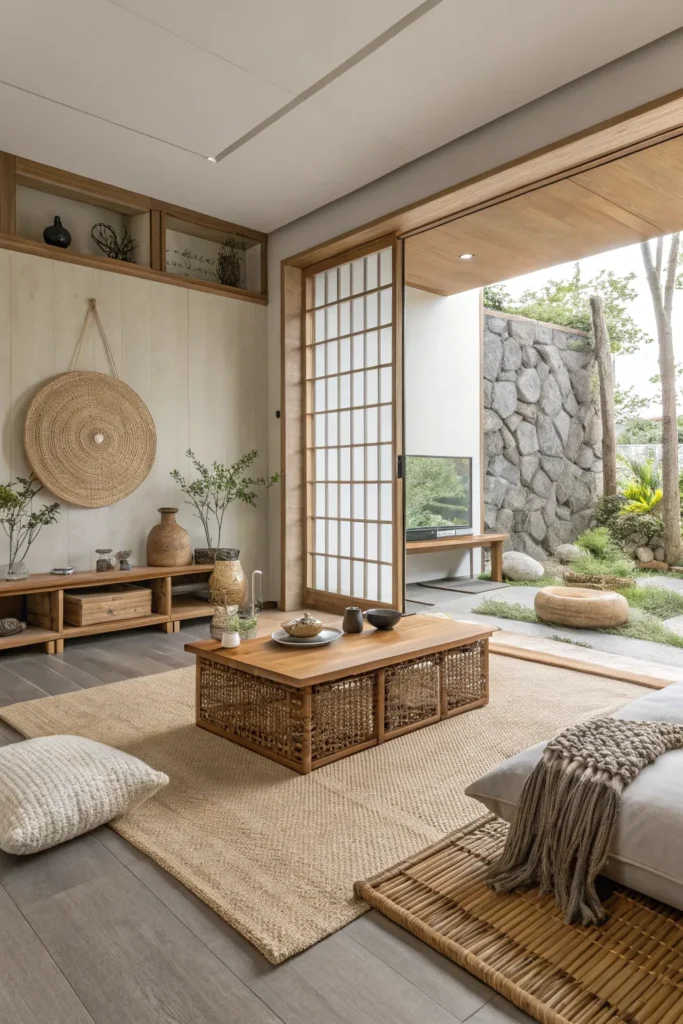
Because Japandi spaces are visually simple, texture becomes the star. Incorporate elements like rattan, linen, wool, jute, and bamboo. They add quiet richness without feeling overwhelming. A woven rug under a wooden table, linen cushions, or a wool throw instantly makes the space more tactile and inviting.
You can even play with subtle contrast — smooth ceramics beside rough stone, soft fabrics near clean-lined wood — to keep the look balanced but interesting.
Pro Tip: Mix no more than three main textures to maintain harmony while avoiding clutter.
Keep Clutter Hidden
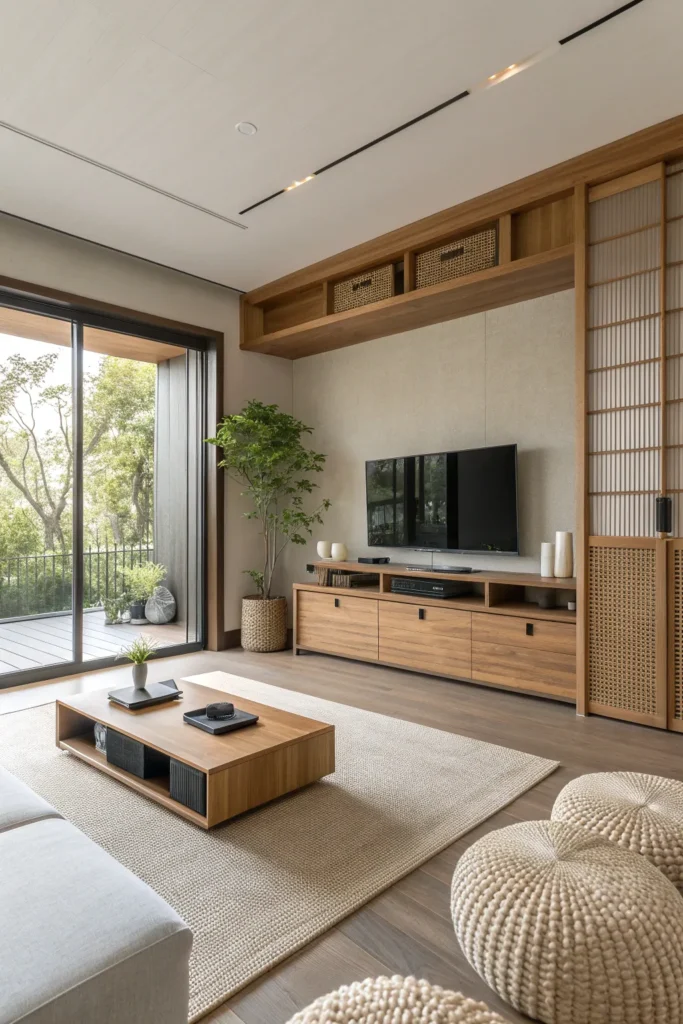
Minimalism only feels good when it’s functional. Japandi spaces prioritize hidden storage — built-in cabinets, baskets, or sideboards that tuck away everyday clutter. Keep surfaces clear and leave open areas between furniture for easy movement and visual calm.
Decluttering also aligns with the Japanese concept of ma — the beauty of space and simplicity. It’s not just about having less; it’s about giving the mind space to breathe.
Pro Tip: Choose furniture with built-in storage, like ottomans with hidden compartments or console tables with drawers.
Minimalist Wall Art
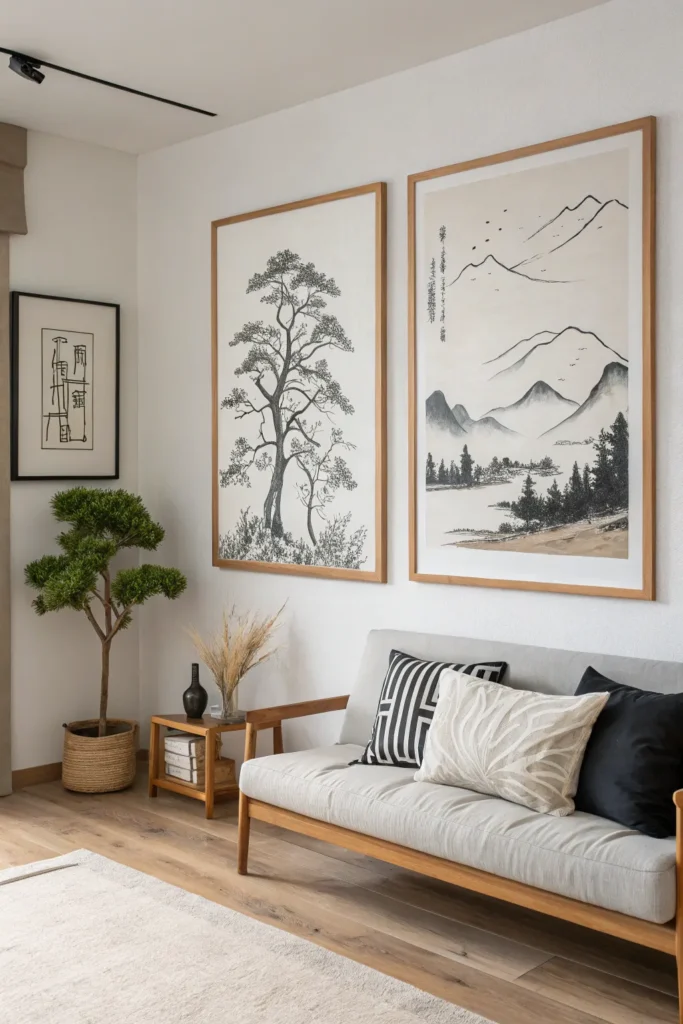
In a Japandi living room, wall art should echo the calmness of the space. Go for minimal pieces that evoke nature or mindfulness — think ink drawings, abstract brushstrokes, or black-and-white photography.
Instead of filling walls, hang one or two pieces that create focus. Let the surrounding empty space become part of the design.
Pro Tip: Choose simple wooden or metal frames and avoid heavy, ornate borders that disrupt the serenity.
Bring Nature Indoors
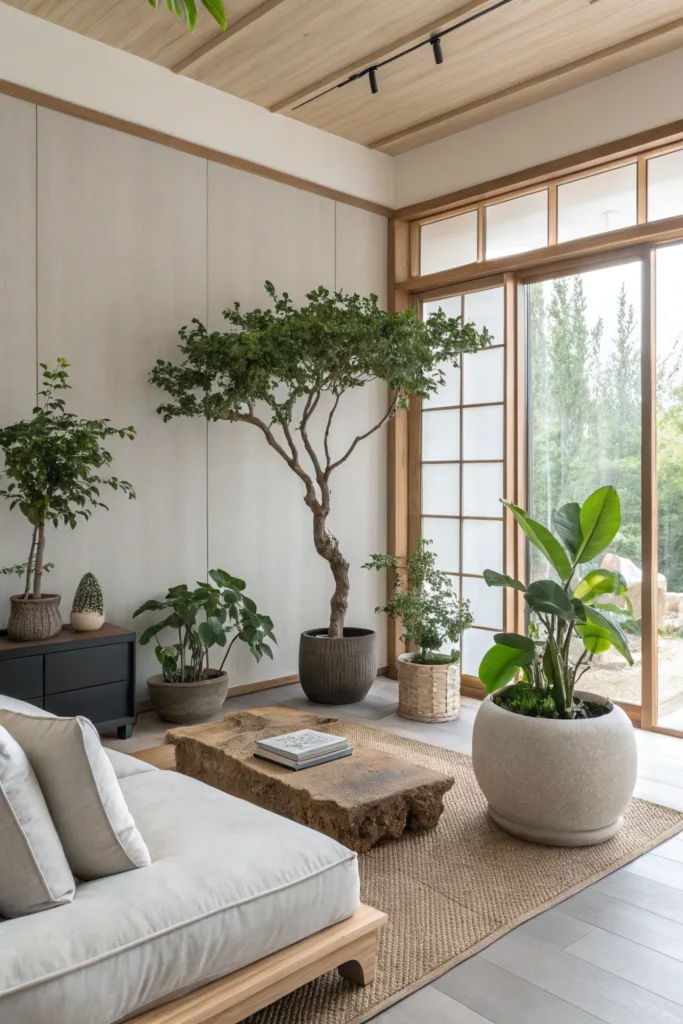
Nature is essential in Japandi design. Adding plants, branches, or floral arrangements connects your home to the outside world. Choose plants that reflect simplicity — not too bushy or colorful. A bonsai, rubber plant, fiddle-leaf fig, or snake plant works perfectly.
Displaying a single branch in a ceramic vase can be just as powerful as a large bouquet. It’s about appreciating form, not excess.
Pro Tip: Use neutral pots like terracotta or matte ceramic to blend naturally with the rest of your decor.
Mix Cozy Textiles Mindfully
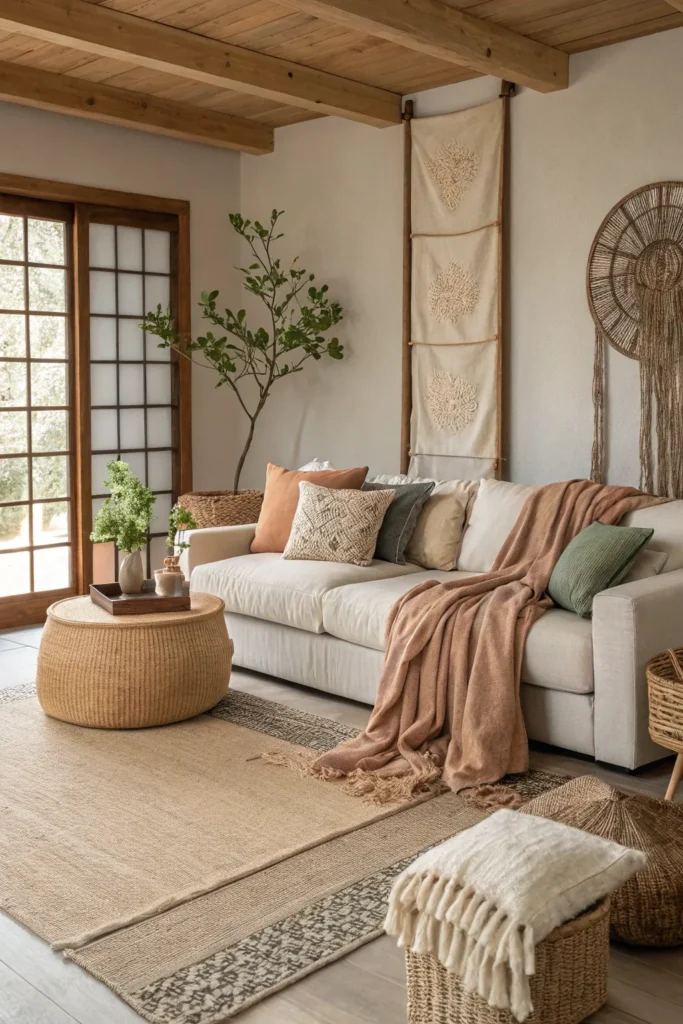
While Japandi looks minimal, it doesn’t feel cold. Use soft textiles to bring comfort — linen cushions, cotton throws, or wool rugs. Stick to earthy tones like oatmeal, clay, or muted sage to maintain harmony.
Layering different fabrics adds a lived-in warmth that’s still refined. Avoid patterns that are too busy — subtle weaves and gentle textures are more in tune with the aesthetic.
Pro Tip: Drape a soft throw loosely over the sofa to create a relaxed, inviting look.
Neutral Accent Pieces
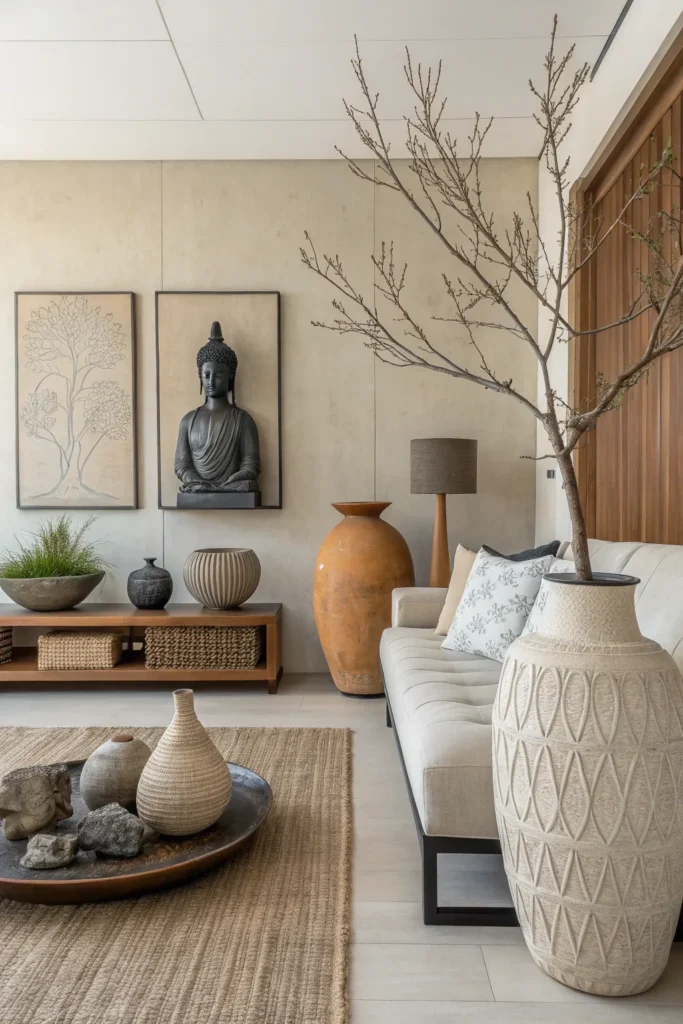
Japandi doesn’t rely on bold colors for visual interest — it uses subtle contrast through neutral accents. Try clay vases, stone sculptures, or handmade pottery in warm beige or charcoal tones. These pieces add personality while staying true to the minimalist vibe.
If you crave a pop of color, limit it to one accent — like muted olive, terracotta, or deep indigo — drawn from nature.
Pro Tip: Keep accents matte or textured instead of shiny or metallic for an organic feel.
Incorporate Soft Lighting
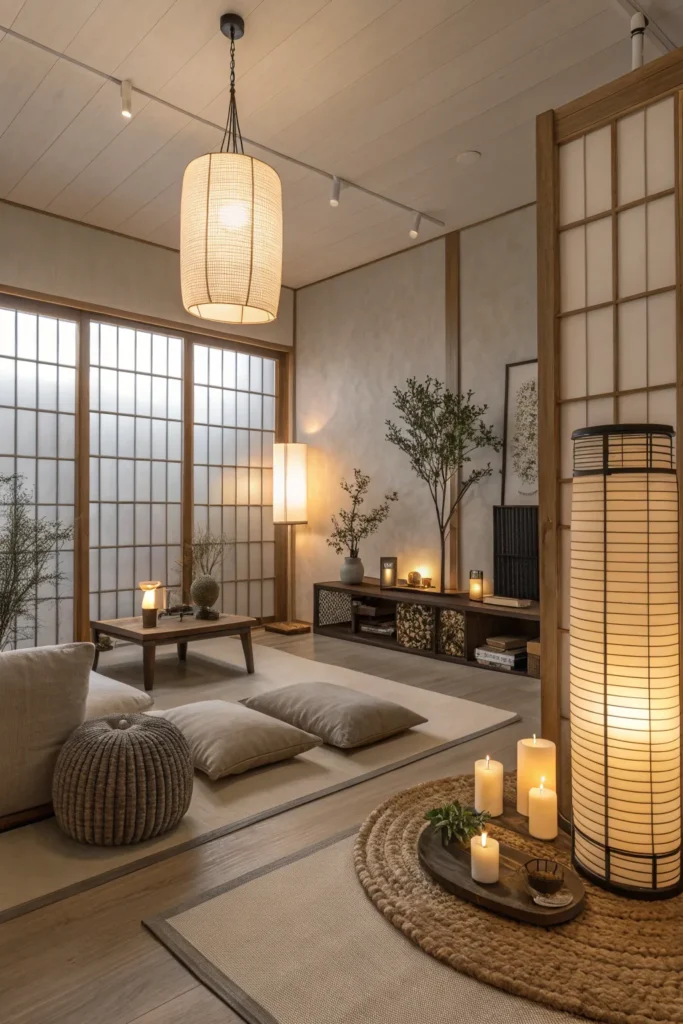
Lighting sets the mood and defines the Zen-like feel of Japandi living rooms. Replace harsh white bulbs with soft, warm light. Use floor lamps with paper or linen shades, pendant lights with wood detailing, and plenty of candles for a tranquil glow.
Natural light during the day and layered, warm lighting at night create a comforting balance — bright enough to see, yet calm enough to relax.
Pro Tip: Avoid overhead lighting alone; use multiple smaller sources for gentle, even illumination.
Open Shelving with Purpose
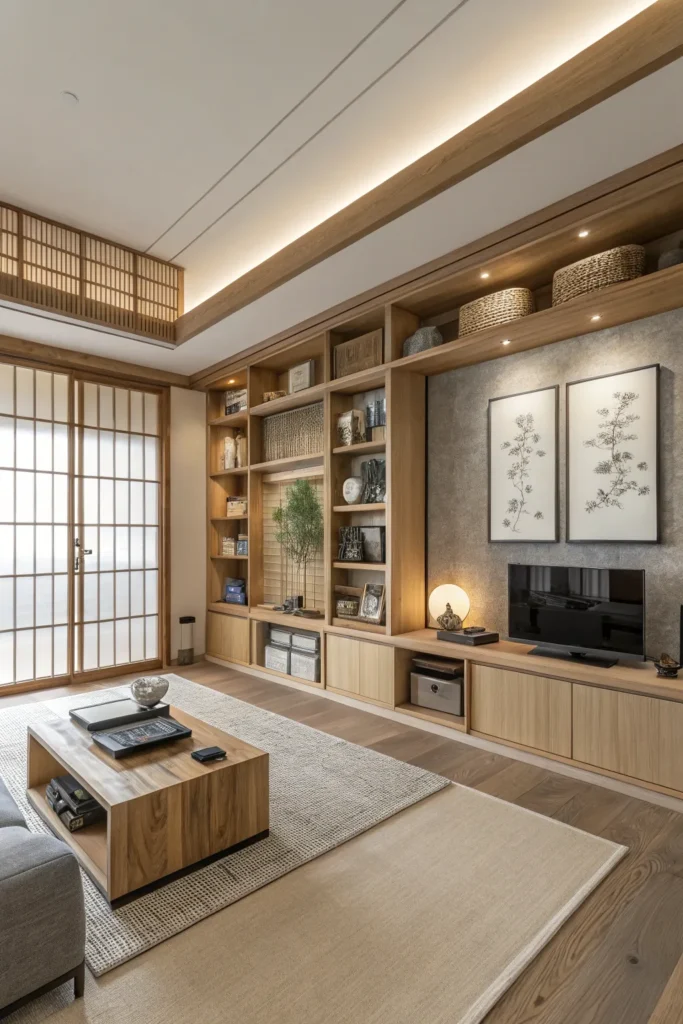
Open shelving can easily turn cluttered, but in Japandi style, it’s treated like a curated art display. Show only what’s meaningful — a few pottery pieces, a candle, or books arranged neatly. Empty space is part of the design, so resist the urge to fill every inch.
This approach not only looks cleaner but also brings focus to what matters most — simplicity and intention.
Pro Tip: Keep items grouped in odd numbers (three or five) for a visually balanced arrangement.
Add a Zen Corner
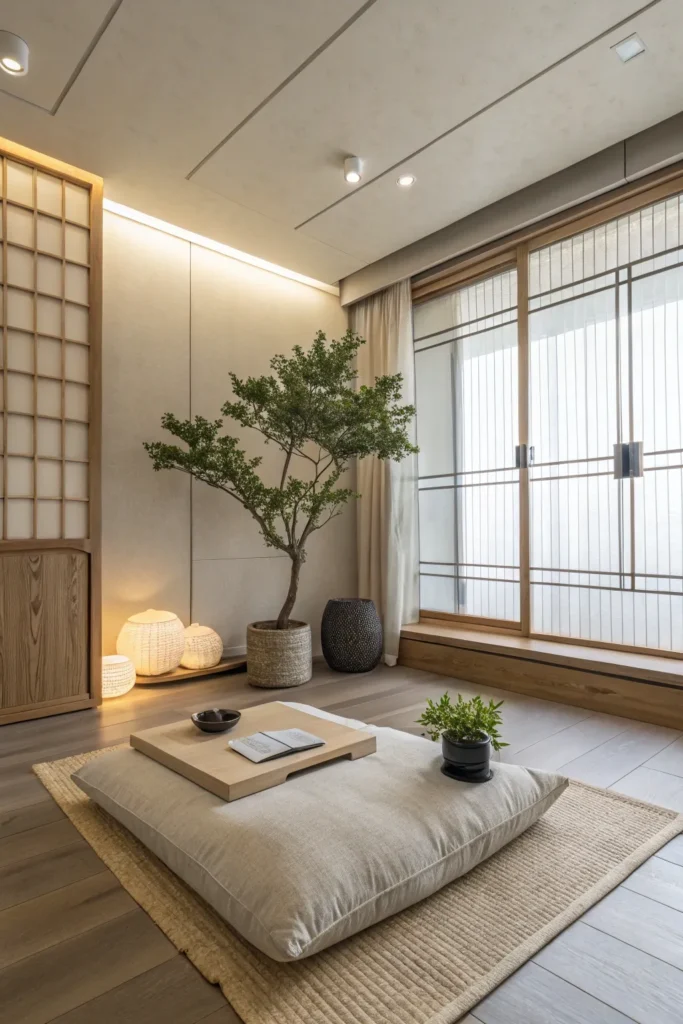
Even a small apartment can have a peaceful nook. Create a mini Zen corner with a floor cushion, a low table, and a single plant or candle. This spot can be your daily retreat for meditation, journaling, or sipping tea in quiet reflection.
A Zen corner doesn’t have to be large; it just needs to feel calm, uncluttered, and mindful. The goal is to create a moment of stillness within your everyday space.
Pro Tip: Use natural scents like cedar, sandalwood, or lavender to enhance the relaxing atmosphere.
Create Flow with Minimal Décor
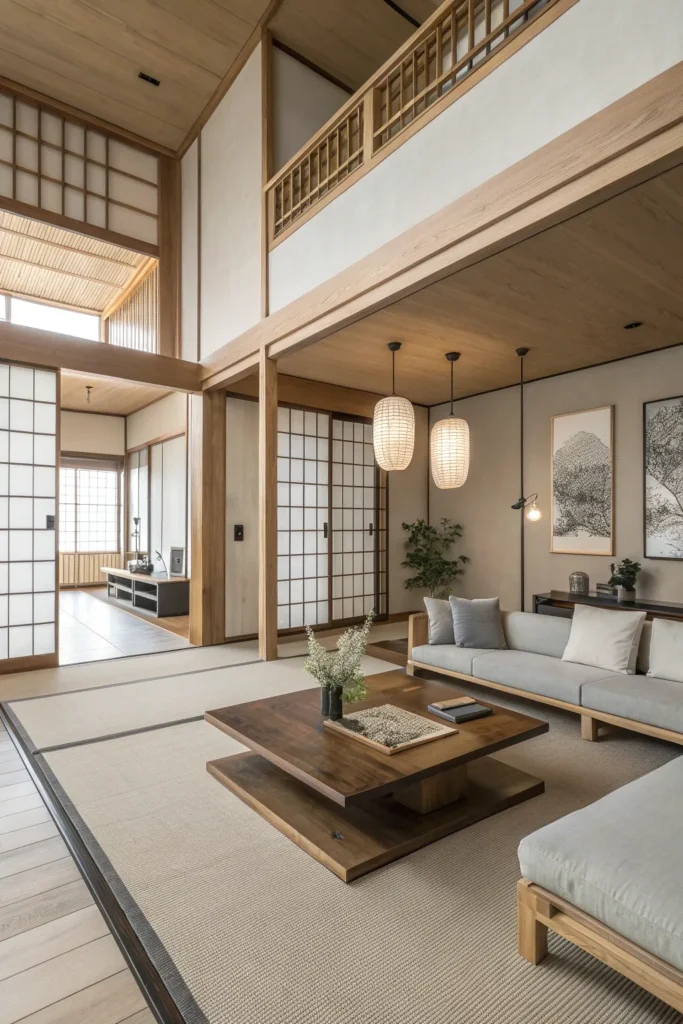
Japandi design celebrates negative space — the areas where there’s nothing but calm. Instead of filling every corner, allow for open pathways and breathing room. Arrange furniture to encourage easy movement and conversation without visual barriers.
Every object should have intention — whether it’s a vase, a chair, or a light fixture. That thoughtfulness is what gives Japandi spaces their quiet power.
Pro Tip: Step back and observe your room. If something feels visually heavy or unnecessary, remove it. Less truly becomes more.
Final Thoughts
A Japandi living room is more than a design choice — it’s a lifestyle shift toward simplicity, balance, and mindfulness. It’s about creating a space that reflects calm energy, encourages rest, and helps you reconnect with what truly matters.
By blending the clean lines of Japanese minimalism with the soft warmth of Scandinavian design, you build a home that feels grounded and effortlessly beautiful — a true modern-day Zen retreat.






